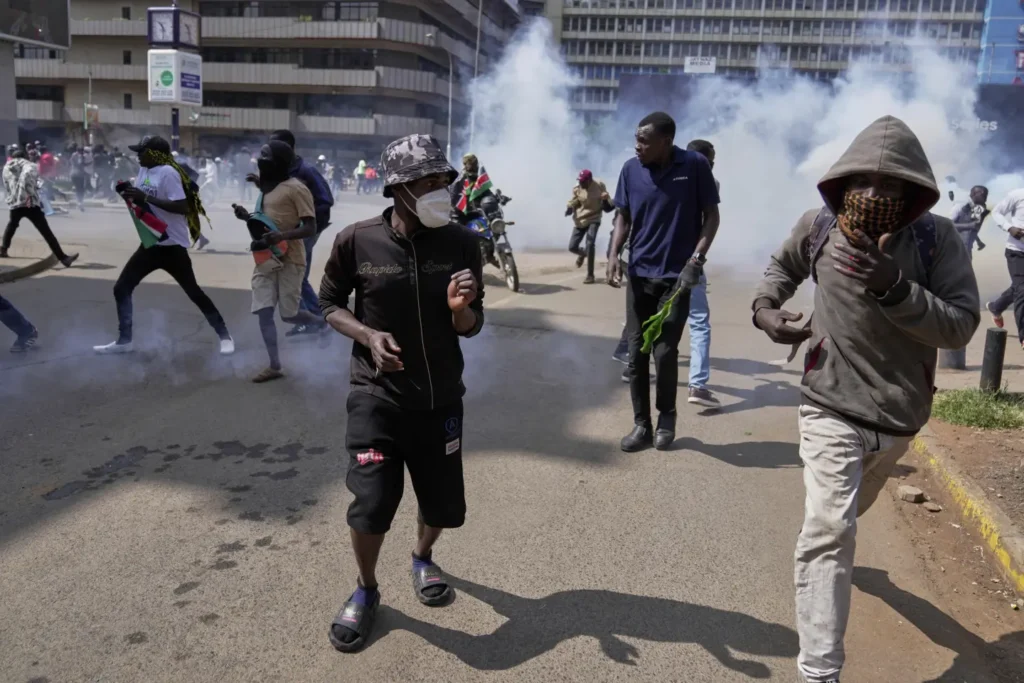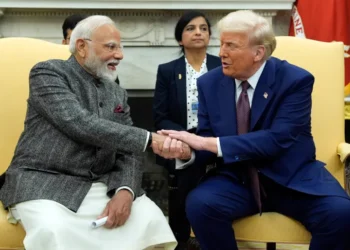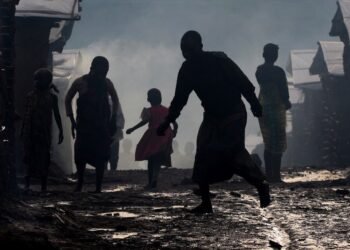Barricades and razor wire surrounded Kenya’s Parliament and President William Ruto’s statehouse office in Nairobi on Wednesday, June 25, as security forces prepared for protests marking one year since the deadly anti-tax demonstrations that claimed 60 lives and left 20 others missing.
A heavy police presence blanketed the capital, with major roads leading to key government buildings sealed off. The heightened security came in response to plans by Kenyan youth to commemorate the victims of last year’s unrest, which saw protesters storm Parliament, torch part of the building, and clash with police amid chaotic scenes.
Bodies were left in the streets as police reportedly opened fire on demonstrators. The military was deployed to quell the violence, drawing criticism from human rights groups and medical personnel who documented the killings.
Frustration continues to simmer among Kenya’s youth, driven by anger over corruption, soaring living costs, police brutality, and the recent death of a blogger in custody. A recent protest where a civilian was shot at close range has only fueled further outrage.
In defiance of official warnings, young Kenyans turned to social media to organize Wednesday’s demonstrations. Despite government spokesperson Isaac Mwaura’s assertion earlier this week that Wednesday would be a “normal working day,” the city bore signs of unease. Businesses shuttered, vehicle access to the central business district was restricted, and crowds gathered from early morning, chanting anti-government slogans.
Police Fire Tear Gas At Protesters
Riot police deployed tear gas in attempts to disperse the swelling crowds. The police inspector general, Douglas Kanja, had issued a statement on Tuesday declaring that “no unauthorized persons would be allowed inside protected zones such as Parliament and the statehouse.”

Despite the tension, many Kenyans insisted on observing the anniversary in memory of those who were killed. Local media published names and photos of some of the victims, with The Standard newspaper running the headline “A luta Continua”—a Portuguese phrase meaning “The struggle continues,” famously used by Mozambican independence fighters.
Wangechi Kahuria, executive director of the Independent Medico-Legal Unit, an NGO that documented the protest-related killings, said people should be “allowed to mourn and go back home.”
Political analyst Herman Manyora referred to the slain demonstrators as “heroes” who paid “the ultimate price” and emphasized the need for a peaceful and respectful commemoration. He added, “The authorities should work with the demonstrators to ensure a good commemoration.”
However, Manyora also cautioned that discontent remains unresolved. “The government has been intransigent and has hardened the resolve of the young people to keep fighting,” he said.
Following last year’s protests, President Ruto responded by dissolving a Cabinet widely accused of corruption and ineptitude. However, his reappointed ministers included many of those previously criticized, sparking further disillusionment.
Although a controversial finance bill proposing steep tax increases was withdrawn after the protests, more taxes were quietly introduced later in the year through legislative amendments, renewing public frustration.
Ruto attempted to ease political tensions by bringing opposition figures into his Cabinet and, in March, signing a political pact with his former election rival, opposition leader Raila Odinga. But for many Kenyans, especially the youth, such moves have not translated into meaningful change.
With protests reigniting on the anniversary of last year’s bloodshed, the government faces growing pressure to listen to its citizens’ demands and respond with accountability rather than repression.
READ ALSO: Former GRA Chiefs Jailed in SML Scandal Uncovered by Manasseh



















